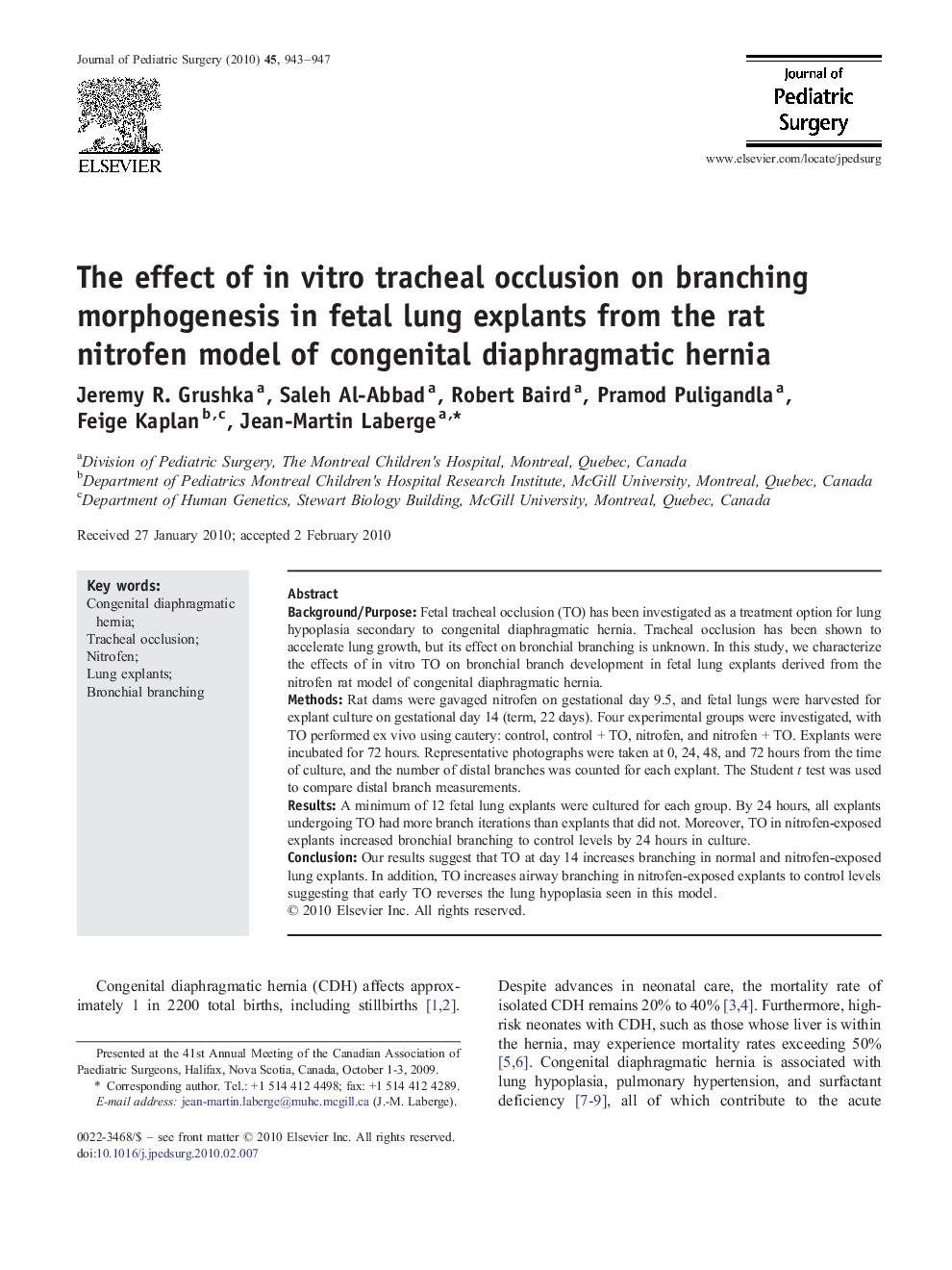| Article ID | Journal | Published Year | Pages | File Type |
|---|---|---|---|---|
| 4157752 | Journal of Pediatric Surgery | 2010 | 5 Pages |
Background/PurposeFetal tracheal occlusion (TO) has been investigated as a treatment option for lung hypoplasia secondary to congenital diaphragmatic hernia. Tracheal occlusion has been shown to accelerate lung growth, but its effect on bronchial branching is unknown. In this study, we characterize the effects of in vitro TO on bronchial branch development in fetal lung explants derived from the nitrofen rat model of congenital diaphragmatic hernia.MethodsRat dams were gavaged nitrofen on gestational day 9.5, and fetal lungs were harvested for explant culture on gestational day 14 (term, 22 days). Four experimental groups were investigated, with TO performed ex vivo using cautery: control, control + TO, nitrofen, and nitrofen + TO. Explants were incubated for 72 hours. Representative photographs were taken at 0, 24, 48, and 72 hours from the time of culture, and the number of distal branches was counted for each explant. The Student t test was used to compare distal branch measurements.ResultsA minimum of 12 fetal lung explants were cultured for each group. By 24 hours, all explants undergoing TO had more branch iterations than explants that did not. Moreover, TO in nitrofen-exposed explants increased bronchial branching to control levels by 24 hours in culture.ConclusionOur results suggest that TO at day 14 increases branching in normal and nitrofen-exposed lung explants. In addition, TO increases airway branching in nitrofen-exposed explants to control levels suggesting that early TO reverses the lung hypoplasia seen in this model.
